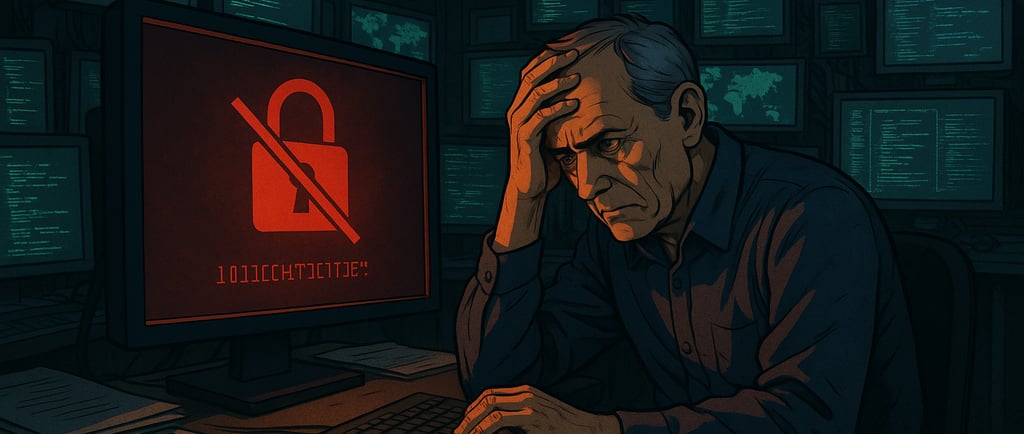
CVE Program Funding Crisis
A crisis in that was needed to be highlighted.
Shane Brown
4/23/20254 min read


CVE Program Funding Crisis: A Wake-Up Call for Global Cybersecurity
On April 16, 2025, the cybersecurity world narrowly avoided a major crisis: the imminent shutdown of the Common Vulnerabilities and Exposures (CVE) Program, the global standard for tracking and sharing information about software vulnerabilities. While a last-minute funding extension from the U.S. Cybersecurity and Infrastructure Security Agency (CISA) kept the program running for now, the episode exposed deep structural risks in how the world manages cyber threats—and signaled that change is urgently needed.
What is the CVE Program, and Why Does It Matter?
The CVE Program, managed by MITRE since 1999, provides unique identifiers for publicly disclosed cybersecurity vulnerabilities. These "CVE IDs" are the backbone of vulnerability management, enabling security teams, vendors, governments, and researchers to communicate clearly and coordinate responses to emerging threats. Everything from patch management tools to national vulnerability databases and incident response plans relies on the CVE system for clarity and consistency.
Without CVE, defenders would be left sorting through a chaotic jumble of conflicting vulnerability names and descriptions—akin to "tearing out the card catalog from every library at once," as one former CISA director put it.
How Did the Crisis Unfold?
On April 15, MITRE issued an urgent warning: U.S. government funding for the CVE and related Common Weakness Enumeration (CWE) programs would expire the next day, threatening to halt new vulnerability assignments and updates. The cybersecurity community reacted with alarm, highlighting the catastrophic impact a shutdown would have on vulnerability tracking, incident response, and even critical infrastructure protection.
CISA responded late on April 16 by executing an "option period" in its contract with MITRE, securing 11 months of additional funding and averting an immediate shutdown. However, this stopgap measure laid bare the program's dependence on a single government sponsor—a vulnerability in itself.
Why Is This a Big Deal?
Single Point of Failure: The crisis revealed that the entire global vulnerability management system hinges on a single U.S. government contract. As attacks from nation-state actors and criminal groups escalate, such fragility is unacceptable.
Immediate Industry Disruption: Even the brief uncertainty forced security teams and vendors to scramble, preparing for potential gaps in their tools and workflows. Some began exploring alternative, decentralized systems, such as the EU Vulnerability Database (EUVD) and the new Global Cyber Vulnerability Ecosystem (GCVE).
Long-Term Uncertainty: The current funding extension is temporary. With U.S. federal budget cuts looming and political volatility high, the risk of future disruptions remains.
What's Next? The CVE Foundation and the Push for Independence
Recognizing the dangers of relying on a single government sponsor, a coalition of CVE Board members has launched the nonprofit CVE Foundation. Its mission: ensure the long-term viability, stability, and independence of the CVE Program by diversifying funding and governance.
"CVE, as a cornerstone of the global cybersecurity ecosystem, is too important to be vulnerable itself."
— Kent Landfield, CVE Foundation Officer
The Foundation aims to make the CVE Program a truly global, community-driven initiative, free from the risks of government budget cycles and political shifts.
Key Takeaways for Cybersecurity Leaders
Resilience Requires Redundancy: The CVE crisis is a stark reminder that even the most fundamental cybersecurity infrastructure can be fragile. Organizations should advocate for—and contribute to—more resilient, diversified systems.
Stay Informed and Involved: The transition to the CVE Foundation is underway. Security professionals should track developments and consider participating in governance or funding to help shape the future of vulnerability management.
Plan for Contingencies: While the CVE Program continues for now, security teams should assess their reliance on CVE data and explore backup plans, including alternate vulnerability databases and enhanced internal tracking processes.
Conclusion
The CVE funding scare was more than a bureaucratic hiccup—it was a wake-up call for the global cybersecurity community. As attacks grow in sophistication and scale, the tools we use to defend ourselves must be robust, resilient, and independent. The next 11 months will be critical in determining whether the CVE Program can evolve to meet these challenges—or whether the world's defenders will be left chasing vulnerabilities in the dark.
Sources:
Forbes - "CVE Program Funding Cut: What It Means and What to Do Next" (April 16, 2025)
Bleeping Computer - "MITRE Warns That Funding for Critical CVE Program Expires Today" (April 15, 2025)
Bleeping Computer - "CISA Extends Funding to Ensure No Lapse in Critical CVE Services" (April 16, 2025)
Planet Crust - "MITRE CVE Funding Expiration" (April 16, 2025)
Mimecast - "CVE Program Receives Funding Extension, But Concerns Remain" (April 17, 2025)
NextGov - "CISA Extends MITRE-Backed CVE Contract Hours Before Its Lapse" (April 16, 2025)
CyberNews - "CVE Database Foundation Established as Nonprofit Funding Board" (April 17, 2025)
Barracuda - "CVE Program Funding Crisis" (April 16, 2025)
Cybersecurity Dive - "CISA Extends Funding for CVE" (April 16, 2025)
CSO Online - "CVE Program Faces Swift End After DHS Fails to Renew Contract" (April 15, 2025)
Sysdig - "CVE Wake-Up Call: What's Ahead After the MITRE Funding Fiasco" (April 17, 2025)
Dark Reading - "CVE Program Cuts Cyber Sector" (April 16, 2025)
Security Brief - "US Funding Lapse Casts Uncertainty Over Global CVE System" (April 16, 2025)
The CVE Foundation - Official Website (April 2025)
The Hacker News - "US Govt Funding for MITRE's CVE Ends" (April 15, 2025)
Wired - "CVE Program CISA Funding Chaos" (April 17, 2025)
Infosecurity Magazine - "CISA CVE Program MITRE Contract" (April 16, 2025)
Industrial Cyber - "US CISA Extends MITRE CVE, CWE Programs with Last-Minute Contract Extension" (April 16, 2025)
Reuters - "US Agency Extends Support Last-Minute for Cyber Vulnerability Database" (April 16, 2025)
Krebs on Security - "Funding Expires for Key Cyber Vulnerability Database" (April 15, 2025)
Ars Technica - "Crucial CVE Flaw Tracking Database Narrowly Avoids Closure Due to DHS Cuts" (April 16, 2025)
Security Week - "MITRE Signals Potential CVE Program Deterioration as US Gov Funding Expires" (April 15, 2025)
Innovate
Building websites and securing your digital presence.
Connect
Support
Info@sinistergatedesigns.com
© Sinister Gate Designs, LLC 2025. All rights reserved.
